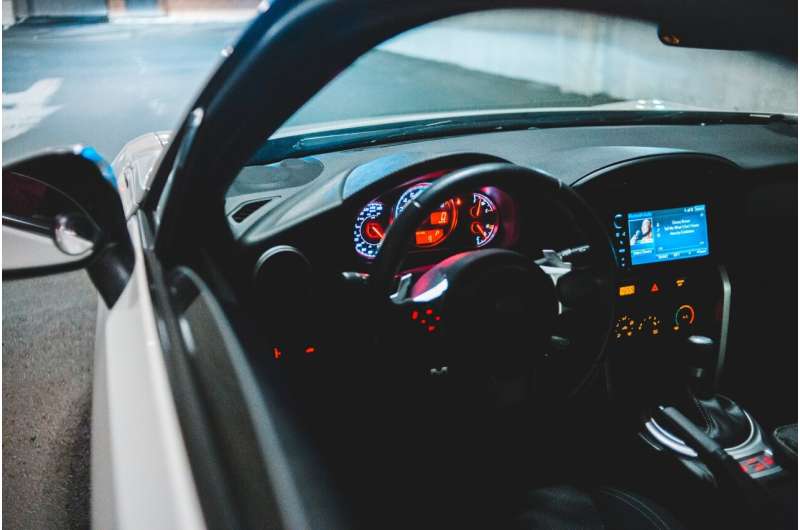Credit: Erik Mclean, Unsplash
In recent years, many companies have been investing in fully and partly autonomous vehicles. Before these vehicles can be deployed in the real world and on a large scale; however, their developers will need to ensure that they are safe and can deal effectively with unpredictable challenges.
Initial trials have revealed that the capabilities of existing automated vehicles are limited, thus, to operate safely, they sometimes require drivers to take over the driving. While in recent years computer scientists have carried out numerous studies focusing on autonomous driving, very few of these specifically examined the transitions during which self-driving cars hand control back to human drivers.
To fill this gap in the literature, three researchers at the Institute for Transport Studies in Leeds have been closely examining the factors that influence drivers during this important handover process. Their findings were presented in a paper published in Elsevier's journal Transportation Research Part F: Traffic Psychology and Behavior.
"This paper is part of my Ph.D. project and it follows a study I published last year," Davide Maggi, one of the researchers who carried out the study, told Tech Xplore. "The main assumption of my research is that drivers cannot be required to take over within a limited amount of time (which research predicted should be approximately seven seconds on average)."
The primary objective of the recent study by Maggi and his colleagues Richard Romano and Oliver Carsten was to gain a better understanding of the factors that influence a human driver's behavior during transitions from highly automated driving. The team hoped that this insight would also shed some light on how current advanced driver assistance systems (ADAS) could be improved, to better assist drivers during this crucial handover procedure.
"Although this specific topic (i.e., lateral assistance during transitions) is fairly unexplored, worldwide, several research groups are investigating different aspects around transitions of control (take-over request modalities, take-over time budget, etc.) and behavioral adaptation to driving automation (ironies of automation, out-of-the-loop phenomenon, mental models of automated systems, etc.)," Maggi explained.
Maggi and his colleagues conducted a series of experiments involving a group of human participants. In these tests, they used a non-driving related task to distract participants from the road in front of them while the vehicle was driving autonomously, then examined how they behaved during subsequent handover procedures.
"This allowed for what has been defined as the Out-of-the-loop (OOTL) phenomenon to kick in, which in simplified terms is a lack of awareness and no direct physical control of the vehicle," Maggi said. "After this artifice, we asked the drivers to take back control and adopted different lateral assistances to help drivers in different aspects (keeping the lane first and safely changing the lane)."
While the participants engaged in handover procedures, the researchers recorded different data using an eye-tracker and the steering wheel, as well as information related to the vehicle dynamics. Subsequently, they analyzed this data using statistical methods.
"We found that drivers cannot be deemed fully operational as soon as they grab the steering wheel and that assisting drivers during transitions can have many safety benefits," Maggi said. "The main implication of these findings is that we need to think of transitions as features that take into consideration human-related factors, actively helping drivers."
The study carried out by this team of researchers could have important implications for the future development of autonomous and semi-autonomous vehicles. Most notably, it could encourage the creation of new computational tools and systems that facilitate transitions from autonomous to human driving, reducing the risks of accidents.
"We now plan to continue investigating drivers' behavior and build models that can make automation adaptation possible," Maggi added.
More information: Handing control back to drivers: exploring the effects of handover procedure during transitions from highly automated driving. Transportation Research Part F: Traffic Psychology and Behavior(2021). DOI: 10.1016/j.trf.2021.11.008.
Transitions between highly automated and longitudinally assisted driving: the role of the initiator in the fight for authority. Human Factors: The Journal of the Human Factors and Ergonomics Society(2020). DOI: 10.1177/0018720820946183.
© 2021 Science X Network
























